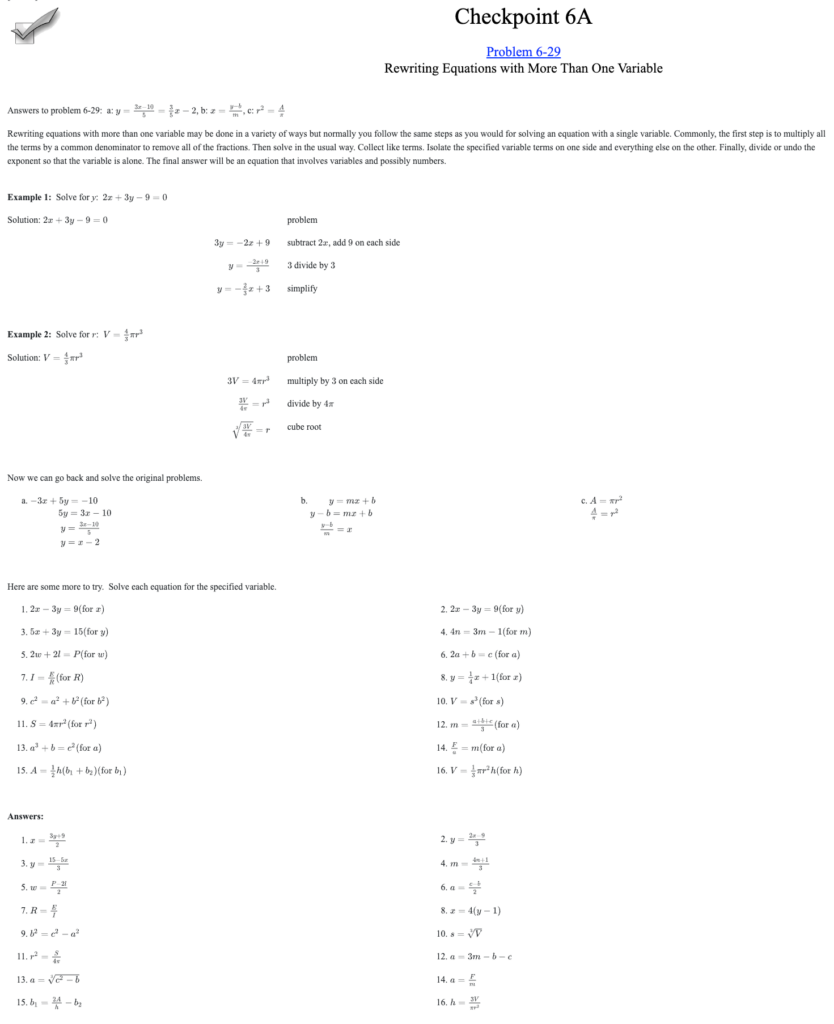Nicole Goerges, Victoria, MN nicolegoerges@cpm.org
Jeremiah Morgan, Eagan, MN jeremiahmorgan@cpm.org
As teachers, we are in a constant state of professional growth. Whether experiencing the current shift in learning in a socially distant or virtual environment, or the realization that our system has been inequitable for too many students for far too long, we know that change is necessary. In our own classrooms, we found room for improvement in our assessment practices. The National Council of Teachers of Mathematics (NCTM) defines excellent assessment as “… an integral part of instruction, provides evidence of proficiency, includes a variety of strategies and data sources, and informs feedback to students and instructional decisions.” Two of NCTM’s productive beliefs stood out to us: (1) Math understanding and processes can be measured through the use of a variety of assessment strategies and tasks, and (2) Assessment is a process that should help students become better judges of their own work.
Excellent assessments
- Inform future instruction;
- Provide evidence of proficiency;
- Are approachable through multiple strategies;
- Are self-assessable for strengths and weaknesses; and
- Reflect the manner in which learning occurred.
We came to the conclusion that providing student-created portfolios helped us check the final box that our traditional assessments lacked. We interviewed teachers with years of experience using portfolios in their classrooms. We were amazed by the ownership students displayed as they identified strengths and weaknesses using their classwork and homework problems as evidence of growth. Beyond assessing students, portfolios created a more equitable class culture where everyone had strengths and weaknesses. Students were more motivated to persevere through their weaknesses because of their experience with their portfolio. Imagine all the thinking that occurs when you assess for learning versus when you assess for a grade.
How do you get started? Members of the Professional Learning Team created a portfolio template for every CPM course found in the Assessment section of the Teacher tab. The Google Slides template provides a space for evidence and reflection for each chapter, where students can include images and text. (Find these in your eBook: go to Teacher > Assessment > Portfolios/Hwk where they are linked.) Once your students have access to the portfolio slides, you will need to facilitate a way for students to identify strengths and weaknesses. One idea is to have students choose one of the Learning Logs listed in the Chapter Closure. Then students find three problems that they have completed on this topic to include as evidence that their understanding has increased over time. The next step is peer and teacher feedback. Students can share their portfolio slides with their team, and their teammates can add feedback, using a strategy such as Two Stars and a Wish. Another possibility is for students to present their rough draft portfolios to their team for verbal feedback. Then students make final edits based on both the student and teacher feedback provided throughout the process.
Consider this final thought: Less is more. Students become self-assessors of their own work by revisiting the problems they already engaged in throughout the course. Portfolios create the platform to facilitate student reflection, teacher-student relationships, and ownership. Since problems are selected from the beginning, middle, and end of learning, students see the connections throughout the sections and chapters.
CPM believes that students should be assessed in the same manner in which they learned during class. Portfolios foster an environment where students generate strategies throughout the unit by problem solving in teams. These strategies are highlighted within their portfolios. While we believe that portfolios are invaluable for learning and teaching, we recognize that it is neither appropriate nor feasible to assess solely through one type of assessment. Since successful implementation of portfolios in the classroom requires explicit modeling, it is best to begin using portfolios after the first or second chapter of the course. We acknowledge that various forms of assessment are still useful to effectively promote learning. But, however you assess, make sure the focus is on what the students know instead of what they don’t know. Take a look at the Assessment section of the Teacher tab of your eBook to get started with portfolios. Many of your students will appreciate an alternative way to demonstrate their growth!


